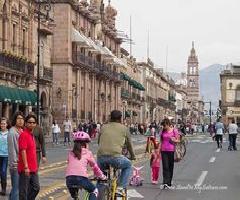It was in the sunset years of the Spanish empire that the California missions were founded in the latter part of the 18th century. California was a far-off outpost, a dusty barren land of low interest beyond a couple of good harbors, but the religious padres granted the task of colonizing were zealous to convert the few natives who lived there.
Father Junipero Serra, utilizing Mexico City as his base, was entrusted with the overwhelming duty of establishing a chain of 21 missions, approximately one day’s march apart, by the California coast. He and his followers weren’t educated architects or engineers,
yet they were able to produce self-sufficient communities composed of complexes of edifices and excellent water supply systems.Though some of the missions might have been built up from the plans of architects and having some skilled craftsman, like the one at Santa Barbara, most were built from the drafts of the padres and with amateur labor. Their designs shone the memories of Churrigueresque churches and homes the padres had seen and experienced in Spain and Mexico. They built their missions using thick walls and courtyards, bell towers and hand-crafted tile roofs. Most of them had terraces and covered arcades. A few of them had decorative openings, a feature presented by the Moors, and some had an espadana, a decorative false front, a tricky artistic style used in Spain to make the facade appear more imposing.
The mission walls were created from sun dried mud which disintegrated in the rain, so it was
essential to have wide eaves and roofed corridors to protect them in the rain. The walls had to be 4 to 5 feet thick to be self supporting, producing deep, striking entrances and interesting window recesses. The walls were plastered with lime stucco, offering a pleasing color contrast with the dark, geometrically cut up doors and the beaming terra cotta color of tile floors and roofs. The padres did not have the experience, training, materials and craftsmen to accomplish the splendid, extremely decorated look of the buildings they attempted to recreate. They possessed only the products of the earth around them to utilize for their missions, the labor of the Native Americans, and their very own hands, and yet the compounding of honest design, massive scale and native materials gave rise to a group of buildings with tremendous and lasting appeal.The padres promoted decoration, and some of the churches were blazing with brightly colored designs carried from the embroidery patterns of religious clothes brought from Spain, examples from manuscripts and books in the mission libraries, native baskets and weavings.
References:
Early American Architecture by Hugh Morrison
The old Mission Churches and Historic Houses of California by Rexford Newcomb
The Missions of California by Melba Levick, Stanley Young
© 4/7/2011 Athena Goodlight on Factoidz
